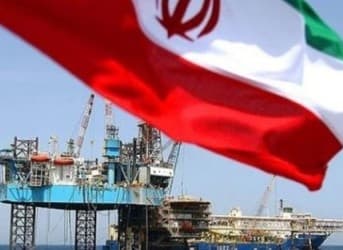As international sanctions against Iranian crude oil went into effect, Tehran announced it was considering new legislation that would cut off oil transit lanes through the Strait of Hormuz. Threats to do so in February sent markets into tail spin, with analysts suggesting that a repeat of the Libyan-sparked surge in 2011 was on the horizon. Authorities in early 2012 said high oil prices would put strains on a global economy limping out of recession. By Monday, however, crude oil prices stayed under the highs reported in February and settled below the $100 per barrel, suggesting oil markets have long since made accommodations for the shortage of Iranian crude.
Tehran said Monday that lawmakers had developed an answer to the European Union's sanctions in the way of a parliamentary bill that would block oil tanker traffic through the Strait of Hormuz, the conduit for about 20 percent of the world's oil transport. When Iran made similar threats early this year, West Texas Intermediate crude topped $108 per barrel. That pressure sparked concerns about the health of the economic recovery, prompting murmurs about tapping into strategic petroleum reserves.
WTI topped $113 in May 2011 as conflict in Libya shuttered most of the country's oil production, forcing the IEA to call for an SPR release. Libya at the height of its production made up about 4 percent of OPEC's total crude oil output but exported around 85 percent of its oil to Europe. With the eurozone roughly five years into its economic crisis, the shortage was of significant concern.
With a six-month warning, however, there was no repeat of the brief Libyan oil shock. Analysts had reported a significant spike in oil prices last week, but cautioned most of that would fizzle out. Markets reacted on Monday more to news of weak manufacturing data from China, Europe and the United States than to Tehran's reaction to international sanctions. But Iran is no Libya, in more ways than one. Whereas Libya exported most of its oil to European consumers, member states get only around 20 percent of their oil from Iran.
Sanctions are in response to transparency issues regarding Iran's controversial nuclear program. White House spokesman Jay Carney, during the weekend, said the sanctions showcase the "seriousness" of the Iranian nuclear issue and they appear to be working. Iranian inflation is reportedly in the double digits and unemployment is high. While this is generally the case across the board, sanctions are hurting an Iranian economy that relies on oil exports for about 80 percent of its revenue. Yet, if Iran uses most of its crude oil domestically, the impact of sanctions shouldn't be overstated. Tehran has enough diplomatic skill to keep most of the international community shielded from its nuclear program and apparently enough economic skill to shore up $150 billion in foreign reserves. Crude ended a choppy day Monday, but declined despite the Iranian sanctions. While sanctions are a win, it’s largely a matter of inches.
By. Daniel Graeber of Oilprice.com

















Umm, best case scenario, what timeframe would that be? Last I read Iran didn't even produce enough gasoline for it's domestic needs. How on earth do you expect them to use most of their oil domestically ?